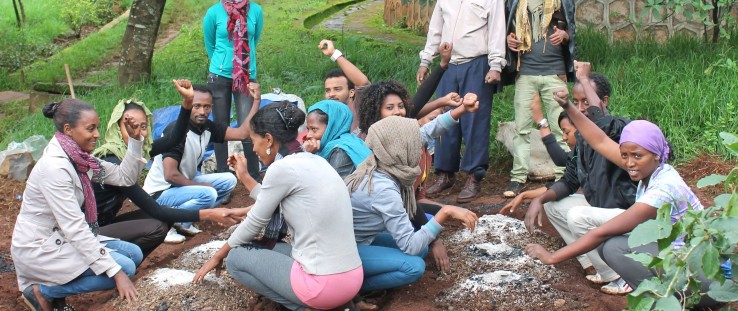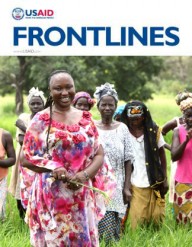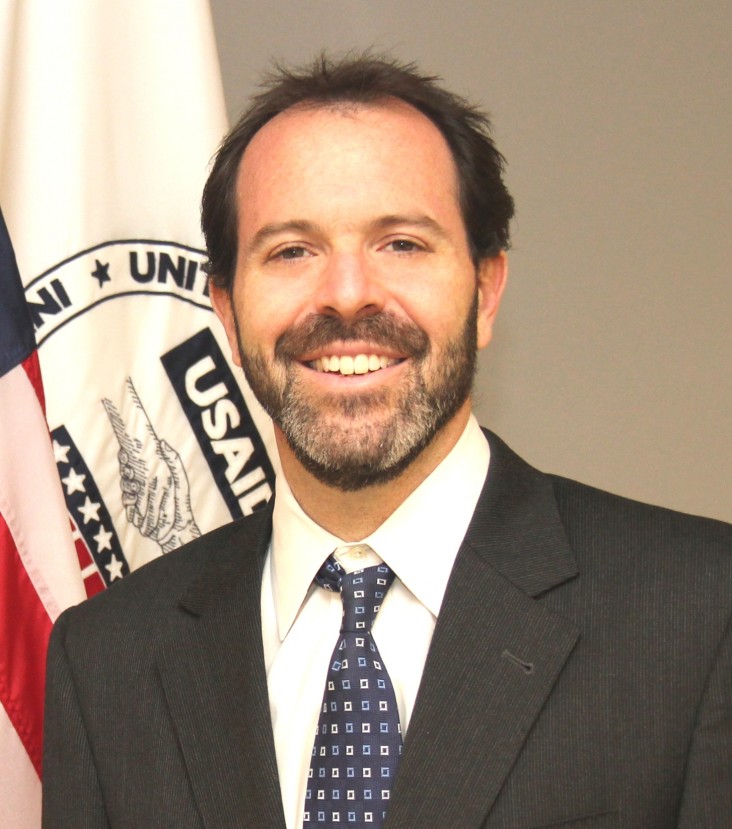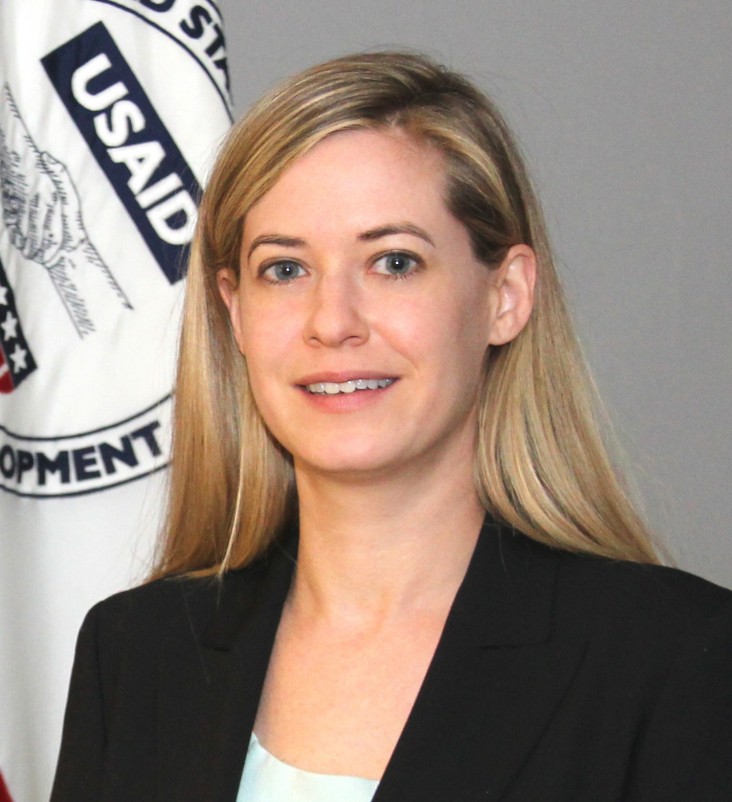 As part of a USAID program in Ethiopia, PermaGardening training helps families of highly vulnerable children produce vegetables in a small garden in a sustainable manner.
Bernd Kiekebusch
As part of a USAID program in Ethiopia, PermaGardening training helps families of highly vulnerable children produce vegetables in a small garden in a sustainable manner.
Bernd Kiekebusch
 As part of a USAID program in Ethiopia, PermaGardening training helps families of highly vulnerable children produce vegetables in a small garden in a sustainable manner.
Bernd Kiekebusch
As part of a USAID program in Ethiopia, PermaGardening training helps families of highly vulnerable children produce vegetables in a small garden in a sustainable manner.
Bernd Kiekebusch
More than 1 billion people, mostly women and children, live in extreme poverty today. That is one out of every six of us forced to choose every day between food, housing, clothing, health care, transportation, children’s schooling, business investments and saving for the future. No measure of human deprivation or insecurity is more stark. But over the next 20 years, we have the power and the political will to change that.
In his 2013 State of the Union address, President Barack Obama issued a bold call to action: that we join with our allies to eradicate extreme poverty in two decades. He challenged us to envision a world devoid of the dignity-defiling denial of basic human needs for the first time in human history. And he outlined the practical steps we need to take to get there. We will do this, he said, “by connecting more people to the global economy; by empowering women; by giving our young and brightest minds new opportunities to serve, and helping communities to feed, and power, and educate themselves; by saving the world’s children from preventable deaths; and by realizing the promise of an AIDS-free generation.”
The president made it clear—our only hope for achieving this goal is by working together with our partners and adopting an integrated, holistic approach that leverages investments in health, food security and energy, and that capitalizes on our collective expertise in education, economic growth, democracy and governance, gender and other critical areas. This isn’t just rhetoric and ending extreme poverty will not be easy. But it is possible.
Today, we stand at a unique moment of opportunity. At last count in 2010, 1.4 billion people, or 20.6 percent of the world population, remained in extreme poverty; however, that was down from 43.1 percent in 1990. In the last two decades, the world has seen unprecedented progress, with countries from Vietnam, Bangladesh and Moldova to Ethiopia, Ghana and Guatemala making historic gains. Progress was achieved in part through rapid economic growth in many developing countries, particularly in Asia.
Some middle-income countries also increasingly provided their own social safety nets. The Oportunidades program in Mexico, for example, demonstrates how cash payments directly to families in exchange for regular school attendance or health care visits can successfully reduce poverty.
In countries where we have seen less progress, a diverse and complex set of constraints has impeded across-the-board growth—from weak institutions, poor policies and armed conflict, to recurring crises, land and water scarcity, and climate vulnerability. To make significant progress by 2030, the global community will need to promote inclusive economic growth so that its benefits reach the poorest, and reach out beyond our usual development partners to address the drivers of fragility, including conflict and ineffective governance.
Luckily, the United States is not alone in our vision of a world without extreme poverty: The global conversation is converging on this shared vision. As the international community discusses what will replace the Millennium Development Goals when they end in 2015, a goal of ending extreme poverty by 2030 is forming the foundation of that conversation.
What does this mean for USAID?
In January, USAID unveiled a new mission statement that builds on our work as an agency to create a world without extreme poverty: “We partner to end extreme poverty and promote resilient, democratic societies while advancing our security and prosperity.”
The mission statement articulates, reinforces and builds upon the contributions that USAID has been making for decades. It offers us the opportunity to sharpen our message, focus our efforts and concentrate on results. We will have to leverage every tool and instrument at our disposal. This includes continuing to expand efforts to harness science, technology, innovation and knowledge exchange to eliminate extreme poverty. This means rallying the global community: working in partnership with international donors, non-profit and charitable institutions, and galvanizing private sector investment towards this effort. It also means leveraging existing efforts, notably the three presidential initiatives of Feed the Future, Global Health and Global Climate Change.
The good news is that USAID is already making critical contributions towards achieving this goal. From 2005 to 2011, extreme poverty rates fell by an average of 5.6 percent across Feed the Future countries. In Rwanda, that means a 24 percent drop in rural poverty rates and significant increases in staple crop production—600 percent for maize, 475 percent for wheat, and 165 percent for beans—since 2006. These successes, coupled with training farmers in post-harvest techniques and constructing improved storage facilities, result in fewer post-harvest losses and higher incomes for farmers.
We are also making impressive gains in our efforts to end preventable deaths for children under age 5. For example, in Afghanistan, the under-5 mortality rate was reduced by 62 percent, from 257 to 97 deaths per 1,000 live births, from 2002 to 2010. There are few more compelling measures of poverty than the inability to access inexpensive, easily administered treatments that can mean the difference between life and death for a small child or a mother giving birth. It is no coincidence that five countries that account for almost 50 percent of preventable under-5 deaths—India, Nigeria, the Democratic Republic of Congo, Pakistan and Ethiopia—also have among the highest extreme poverty rates.
Our resilience efforts empower communities to escape the cycles of drought and famine that politically and economically devastate entire regions. For example, in Malawi, where farmers suffer from extended droughts season after season, USAID is teaching 200,000 people new ways of managing their livelihoods and changing their agricultural practices through a small foot-powered pump that pulls water from nearby rivers and streams to irrigate the land. And USAID is also strongly positioned in fragile countries, where extreme poverty will affect the most people in the years to come.
Ultimately, the international community will only be successful in reaching this ambitious and visionary goal if we take stock of what we know and what we don’t know.
Throughout 2014, USAID is undertaking an extensive analytical and learning agenda that will draw on the best thinking from internal and external experts. We are working with a variety of institutions to host discussions of the external community on key questions related to how we will effectively reduce extreme poverty.
A Web-based discussion platform will enable leading global experts across a range of disciplines to inform our ongoing analysis of extreme poverty. We aim to draw on the incredible wealth of knowledge and expertise from our country partners, other donors, universities and think tanks, and our implementing partners to devise common, coordinated, and innovative solutions. In September 2015, world leaders will stand on stage together proclaiming global unity around the goal to end extreme poverty. We believe this will be one of the most inspiring moments in human history, and we at USAID are part of a movement right now—of people, institutions, governments and the private sector—who will make this vision a reality.













Comment
Make a general inquiry or suggest an improvement.